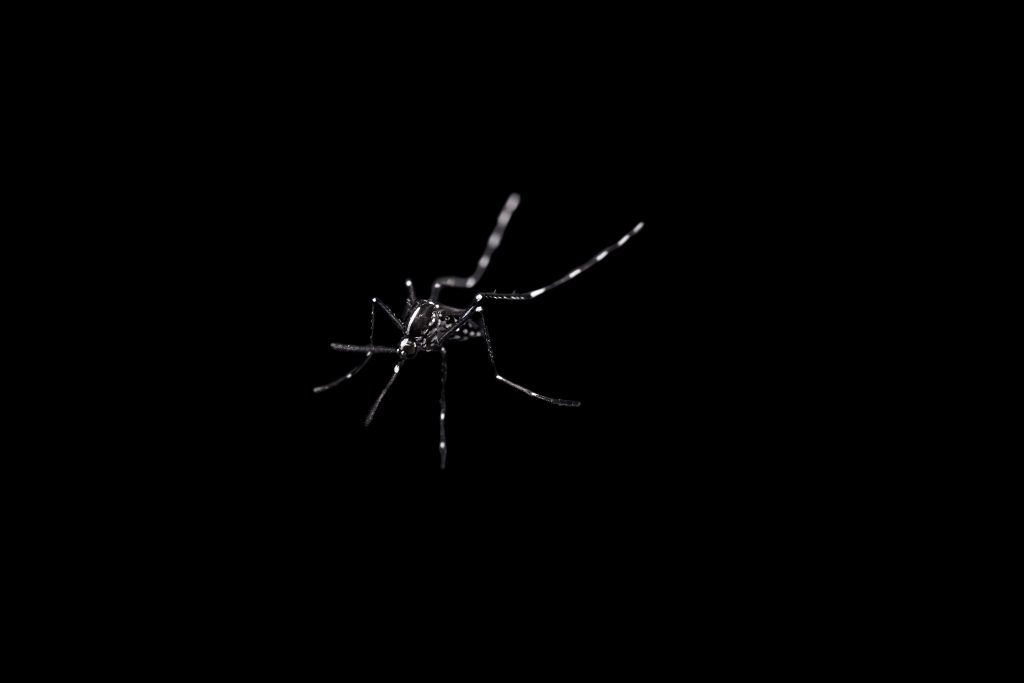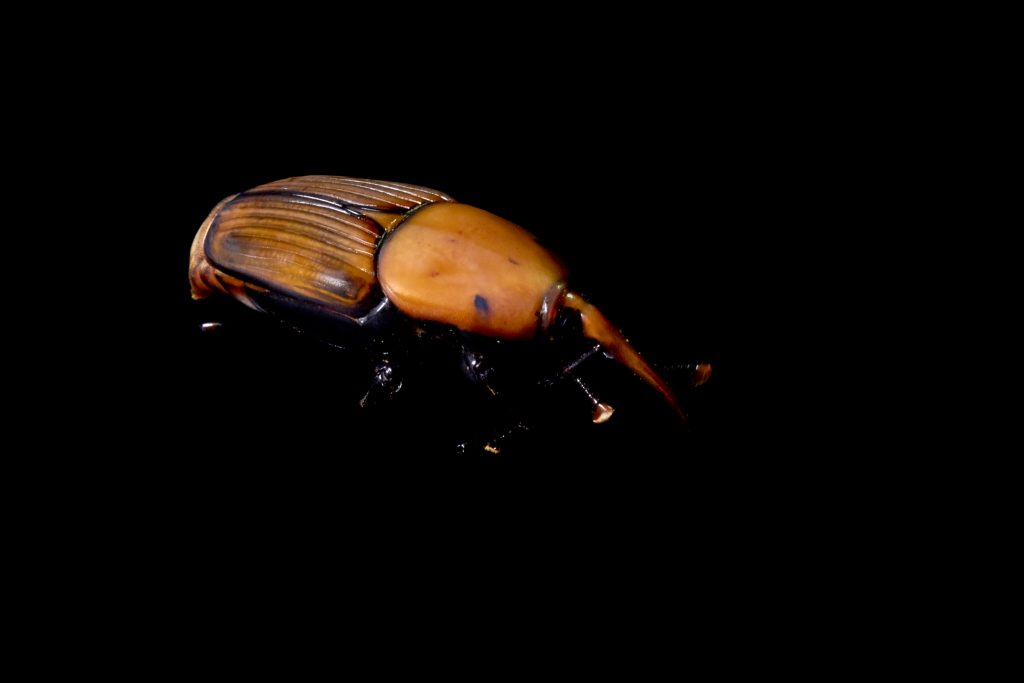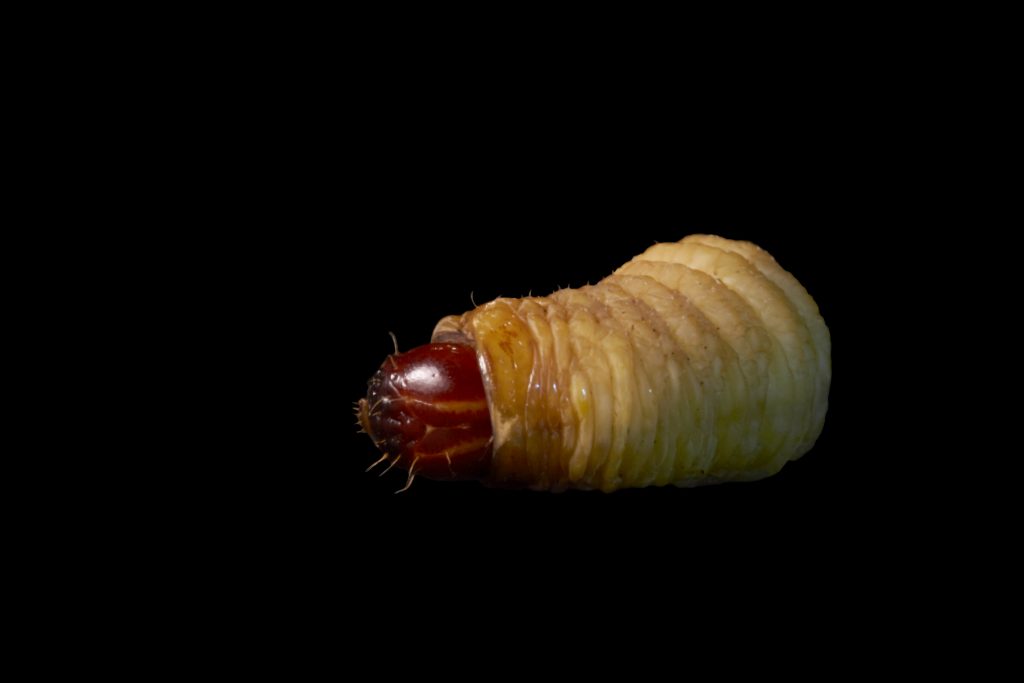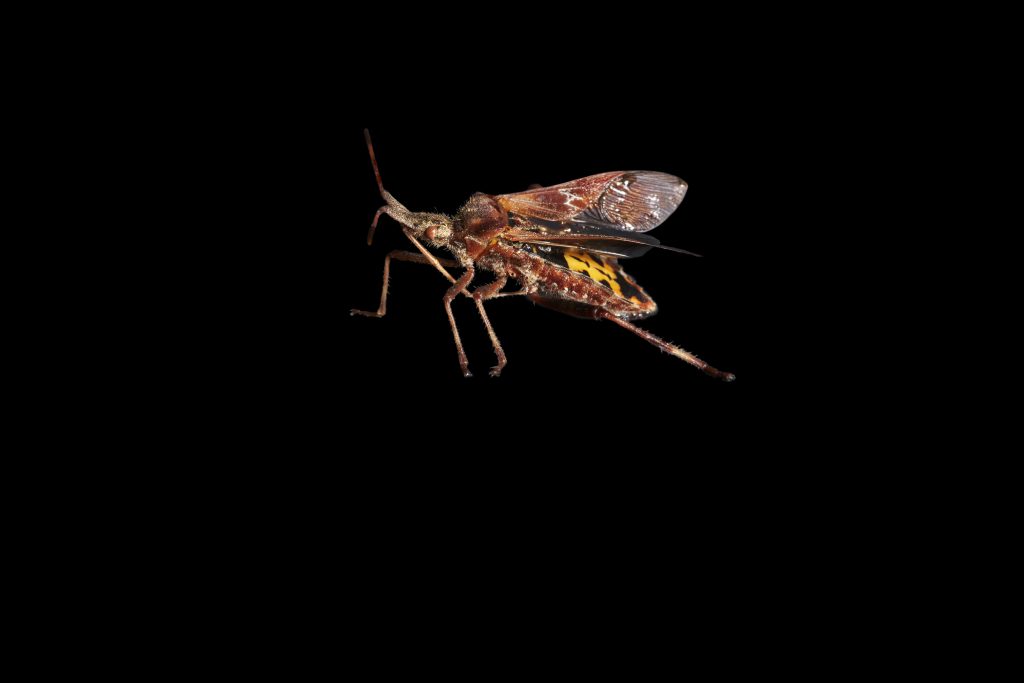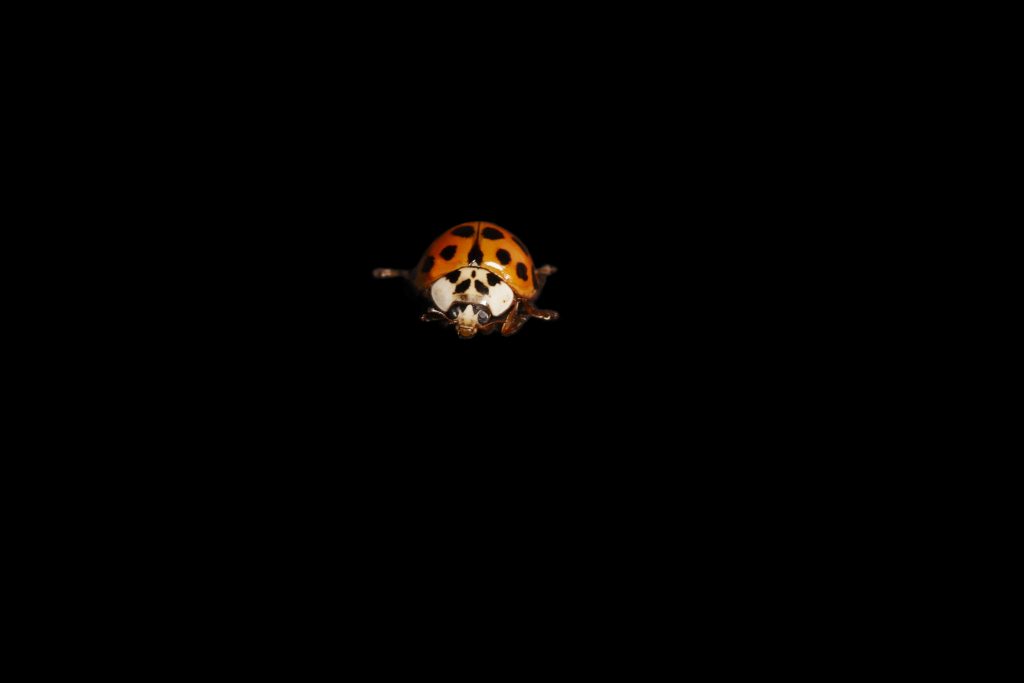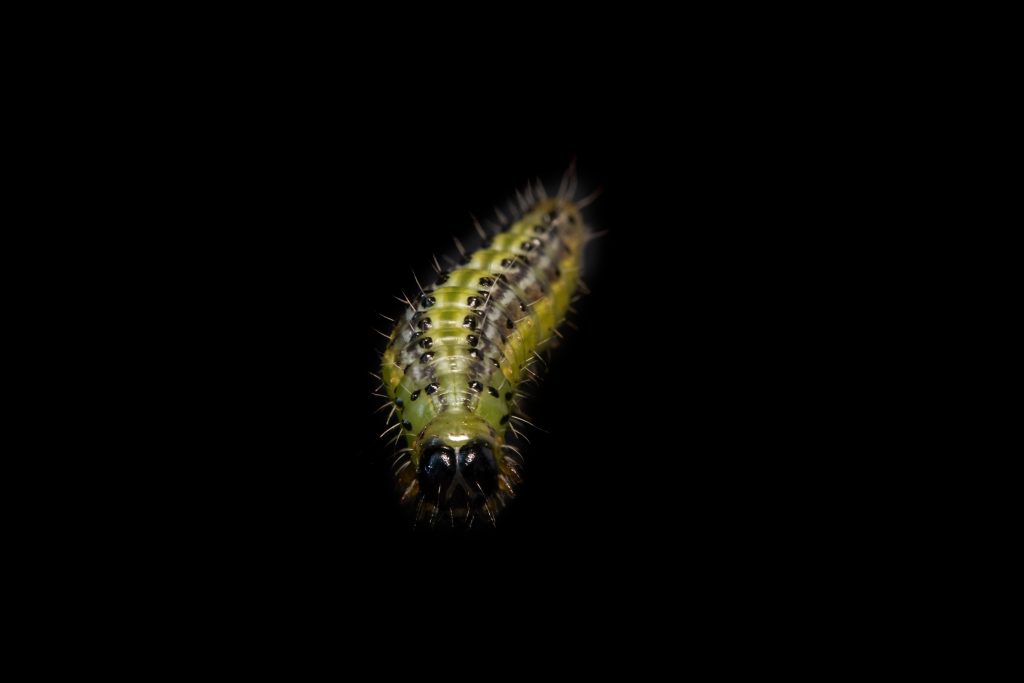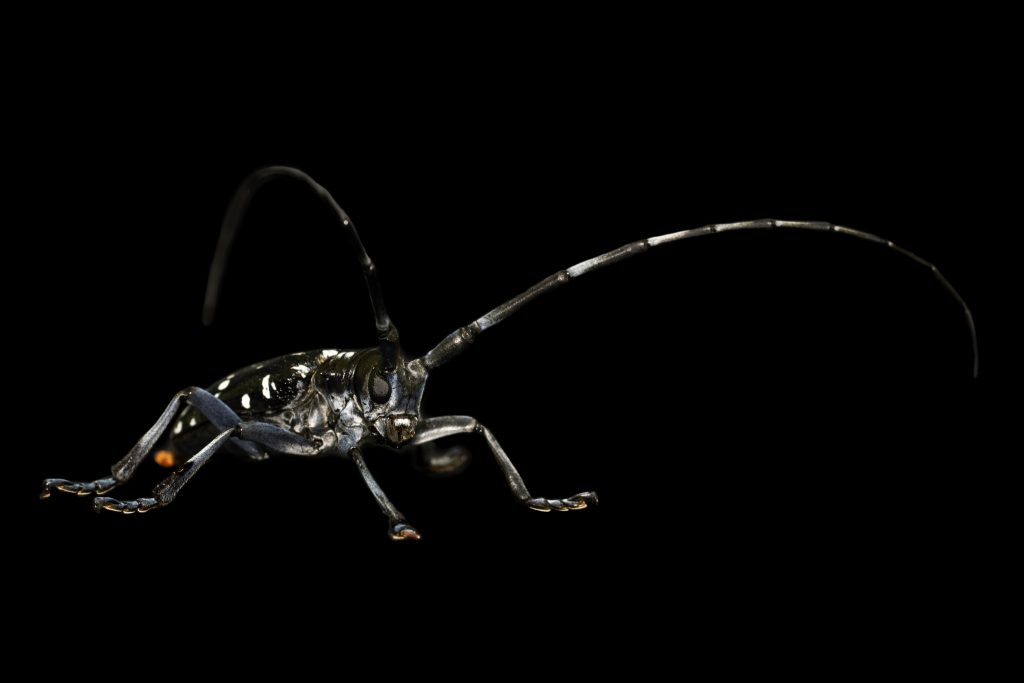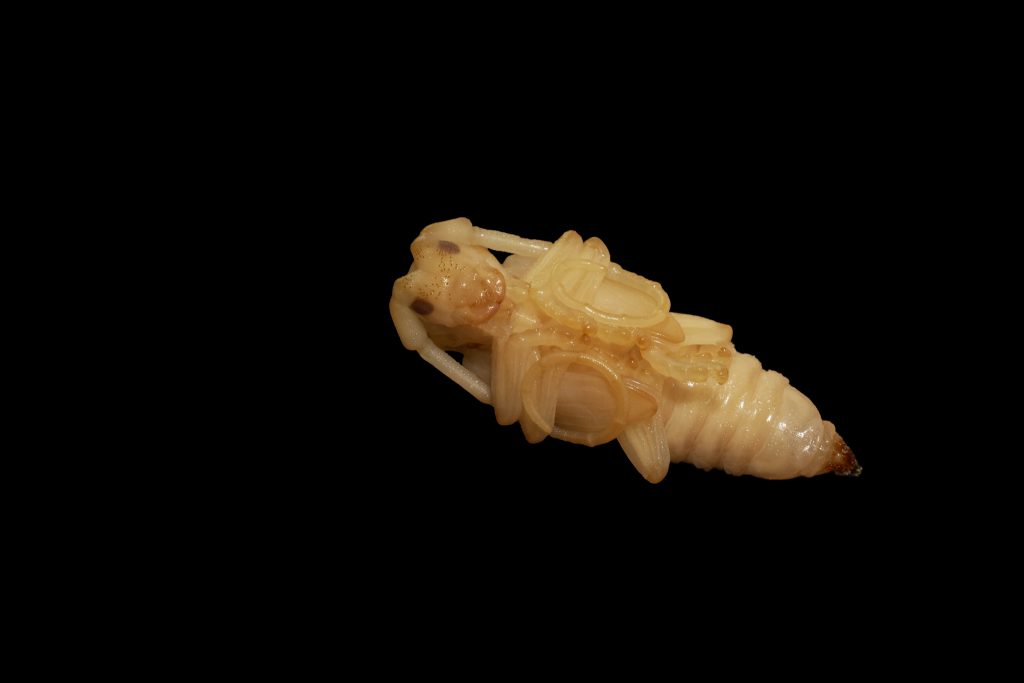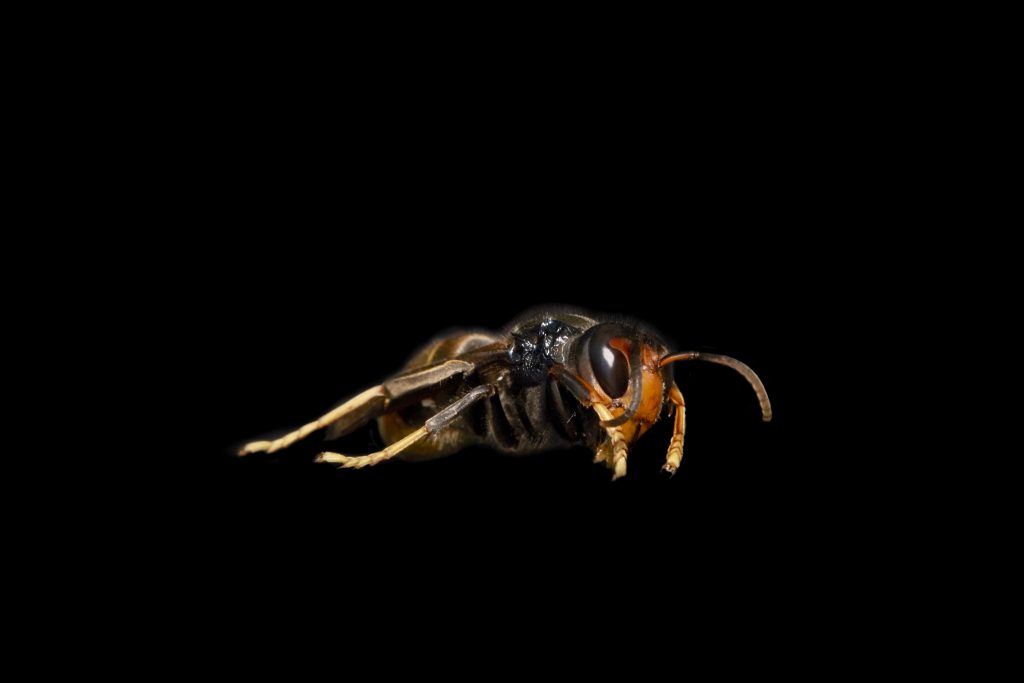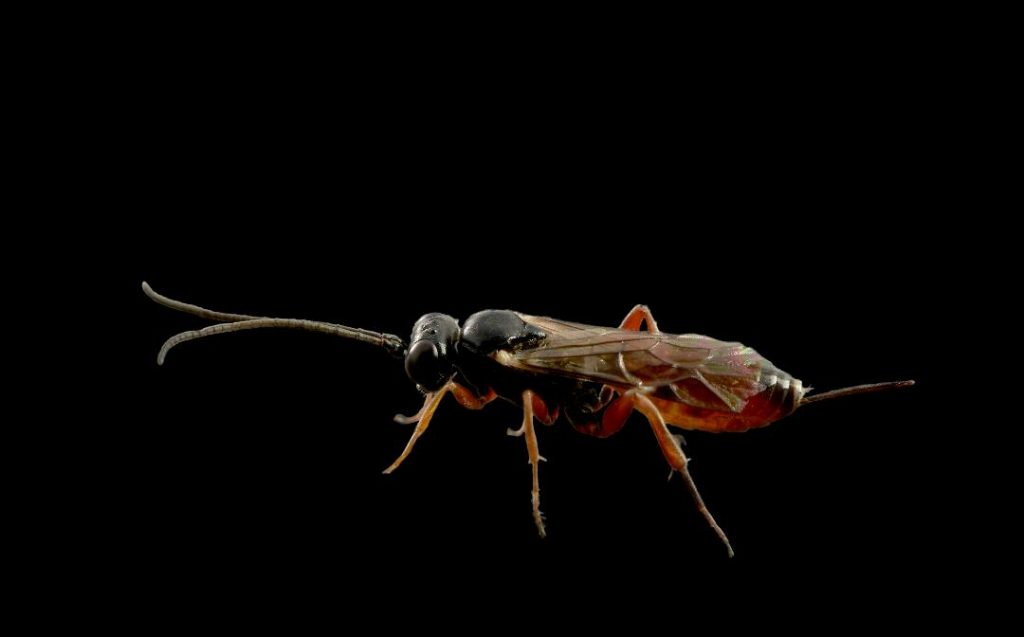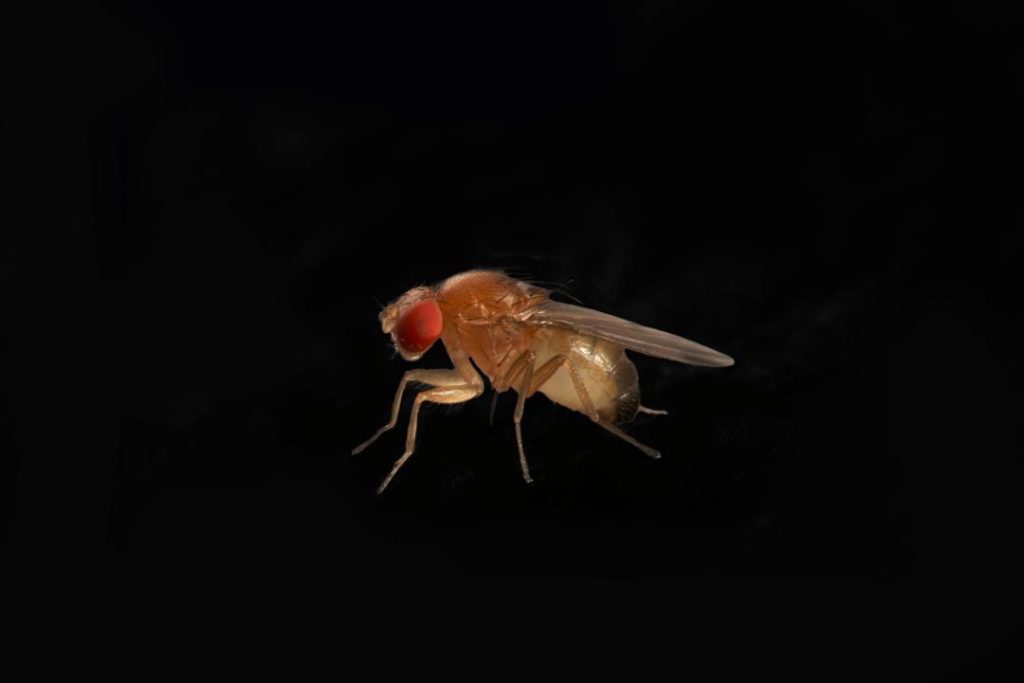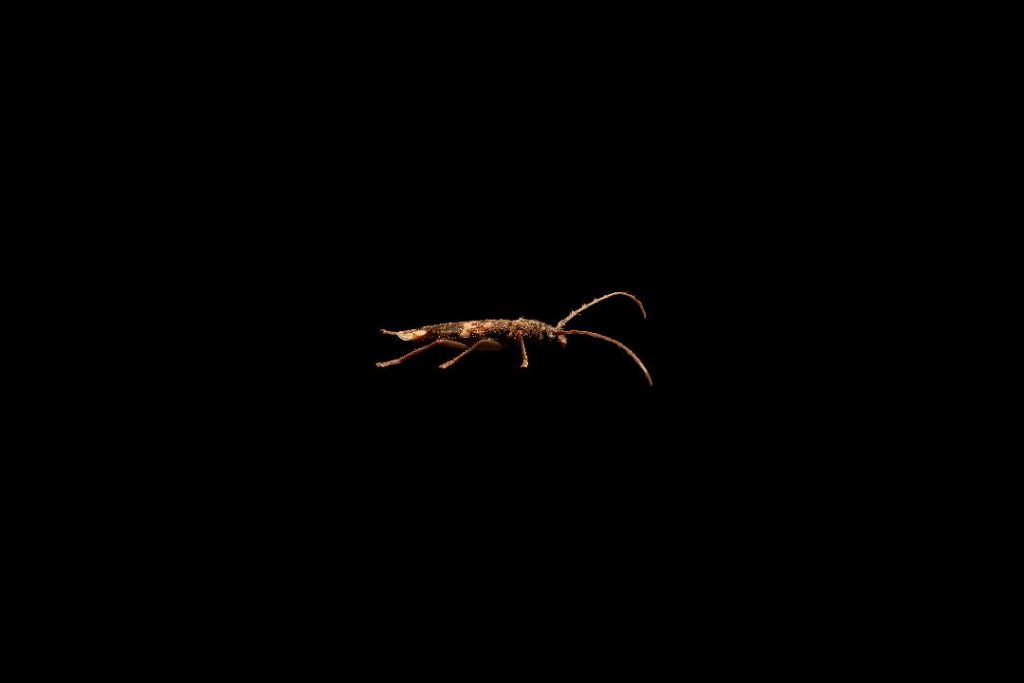L’Etranger de l’Espèce / Alien of the Species
Agnès Villette & Emmanuelle Foussat
L’Etranger de l’Espèce est un projet photographique et d’écriture réalisé en photographie macro en collaboration avec des laboratoires d’entomologie de l’INRA, du Museum d’Histoire Naturelle et du CNRS. Basé sur la sélection de onze insectes dits “invasifs” récemment arrivés en Europe, la série croise les grandes problématiques du réchauffement climatique, des mouvements de population et des échanges commerciaux en provenance de pays en voie de développement. Les onze insectes sélectionnés juxtaposent différentes géographies, originaires, d’Asie, d’Amérique du Nord et du Sud et principalement d’Asie, ils ont convergé vers l’Europe. Chaque insecte a une histoire singulière et son entrée en Europe a souvent été identifiée et datée, permettant comme dans l’enquête policière, de remonter le fil de sa biographie et ainsi de mettre en perspective des enjeux économiques, humains, historiques, militaires et surtout environnementaux. Les “invasifs” une fois parvenus dans nos eco-systèmes européens, loin de leur région d’origine, posent, parmi ceux qui ont réussi à survivre, certains problèmes pour l’agriculture, les paysages ou encore la santé publique.
Le projet inscrit dans le champs des Humanités Environnementales et des Animal Studies, permet, à partir de quelques insectes, d’aborder la complexité contemporaine de nos environnements écologiques et industriels et de nous interroger sur notre monde en mutation.
Two conflicting articles initiated the Alien of the Species’ project. A German research published last autumn revealed that 75% of insects biomass has disappeared, whereas a study published in Nature in 2014 evaluated the cost of invasive insects and their impact on environment and public health at $70 billion per year. Insects happen to be concomitantly, the costliest species on the planet, the most hated ones and the least known and identified of all animal species. They testify for the Capitalocene we live in. Invasive species can be used as a marker of the Anthropocene, having been brought willingly or by accident by explorers and traders in non native zones of the planet. The havoc they cause on a global scale underline specific problematics of our time: monoculture, extensive use of pesticide, mass population movement, globalised commercial trade. Invasive insects ask relevant questions about the complex world we live in. They reveal the entanglement of humans and non humans in a common world. Their spreading is uniquely apprehended by scientists, through dystopian scenarios of bio-wars and containment. Could we imagine other ways to relate to invasive species? Would insect ethnics help us to find alternatives to ecological issues? Can we imagine new collaborations with invasive species in order to share the world we live in?
Conferences:
2019 June The Invisible College Stroud, Stroud, UK, “A tale of humans, insects and the world we share”
2019 April Leiden University, Netherlands, LUCAS Graduate Conference, Animals, Theory, Practices, Representation: “A tale of humans, insects and the world we share”
2018 Aug Turku University, Finland, (Un)Common Worlds Human-Animal Studies Conference, “Aliens assemblages: the untold stories of a few invasive insects”
